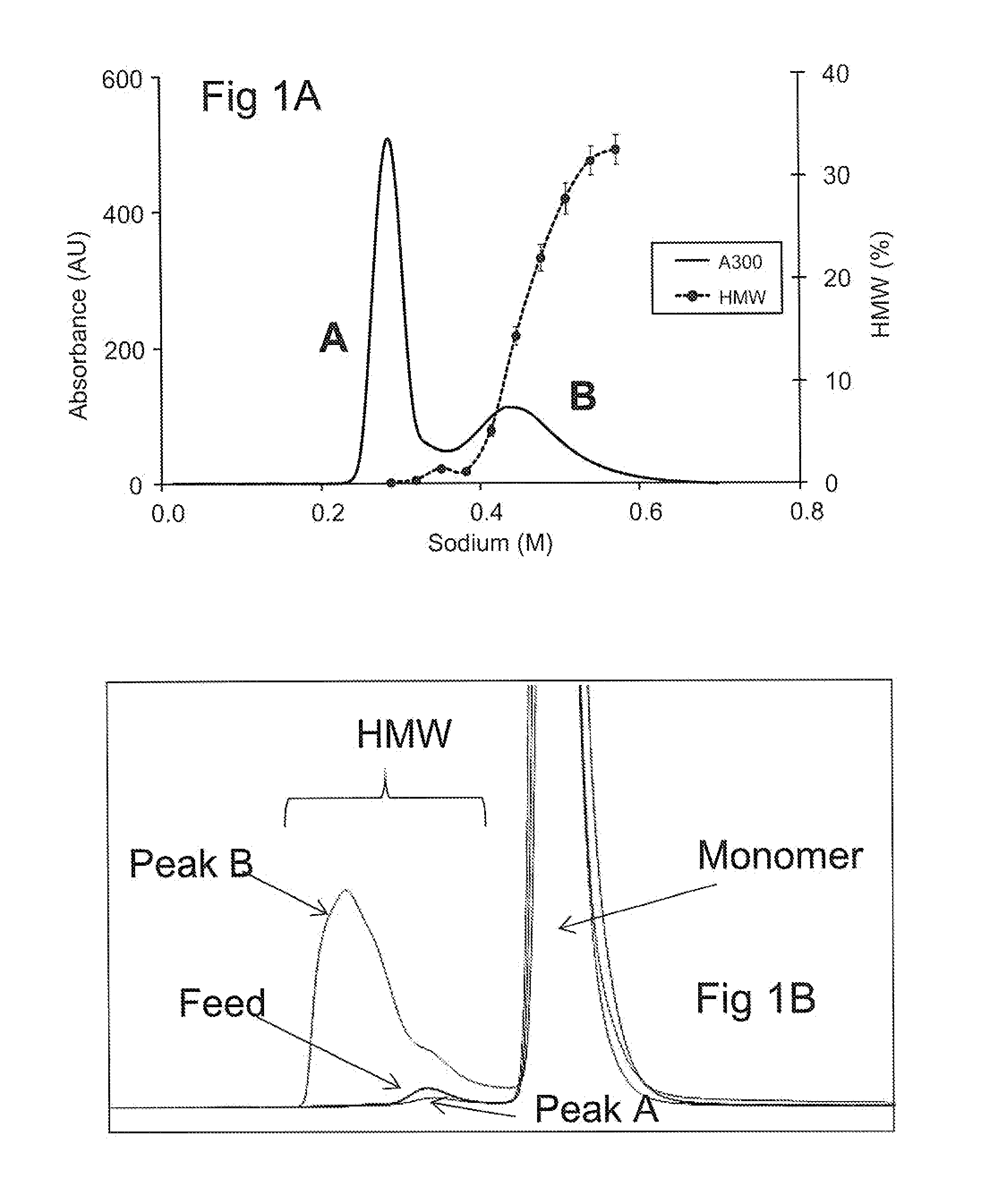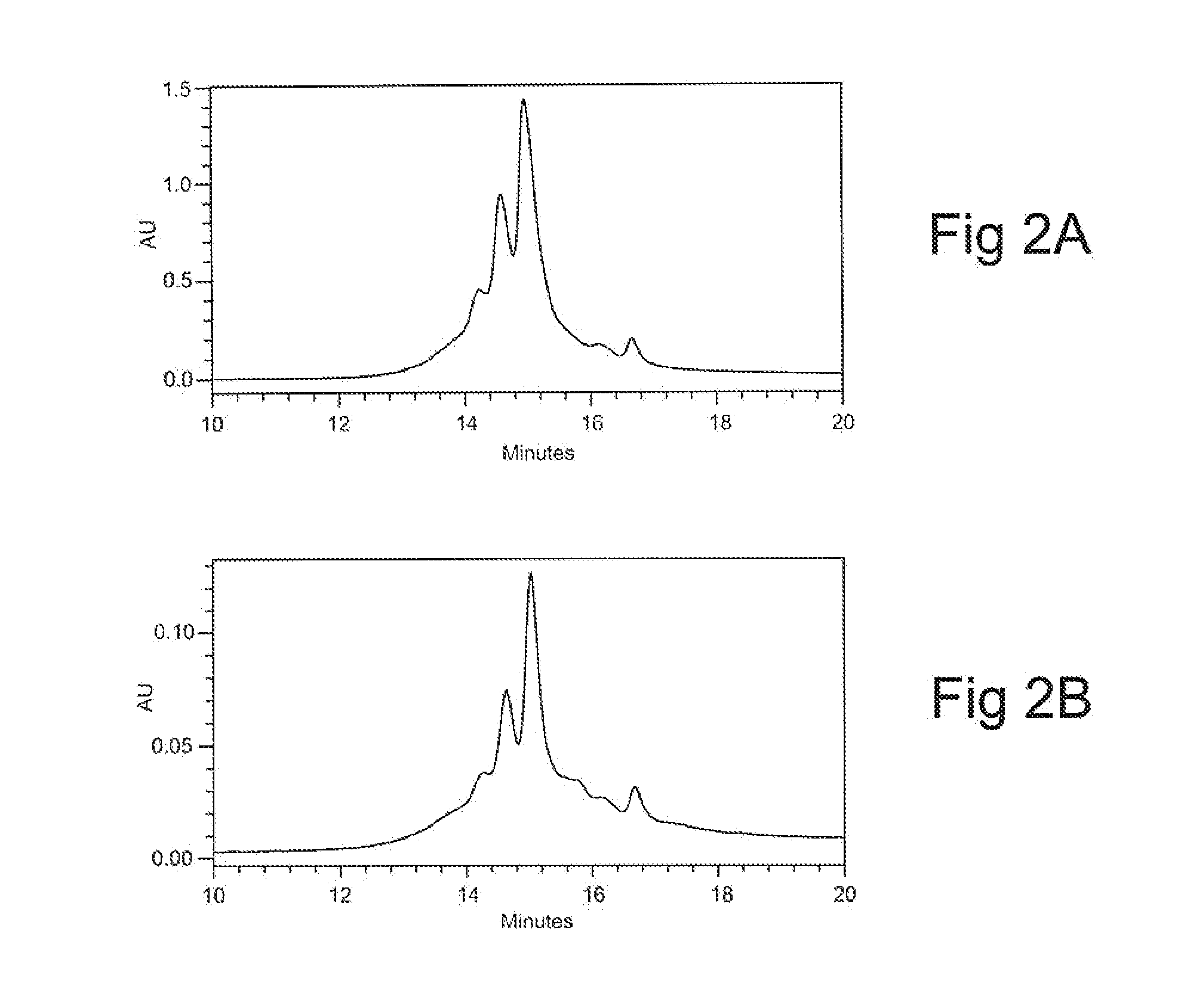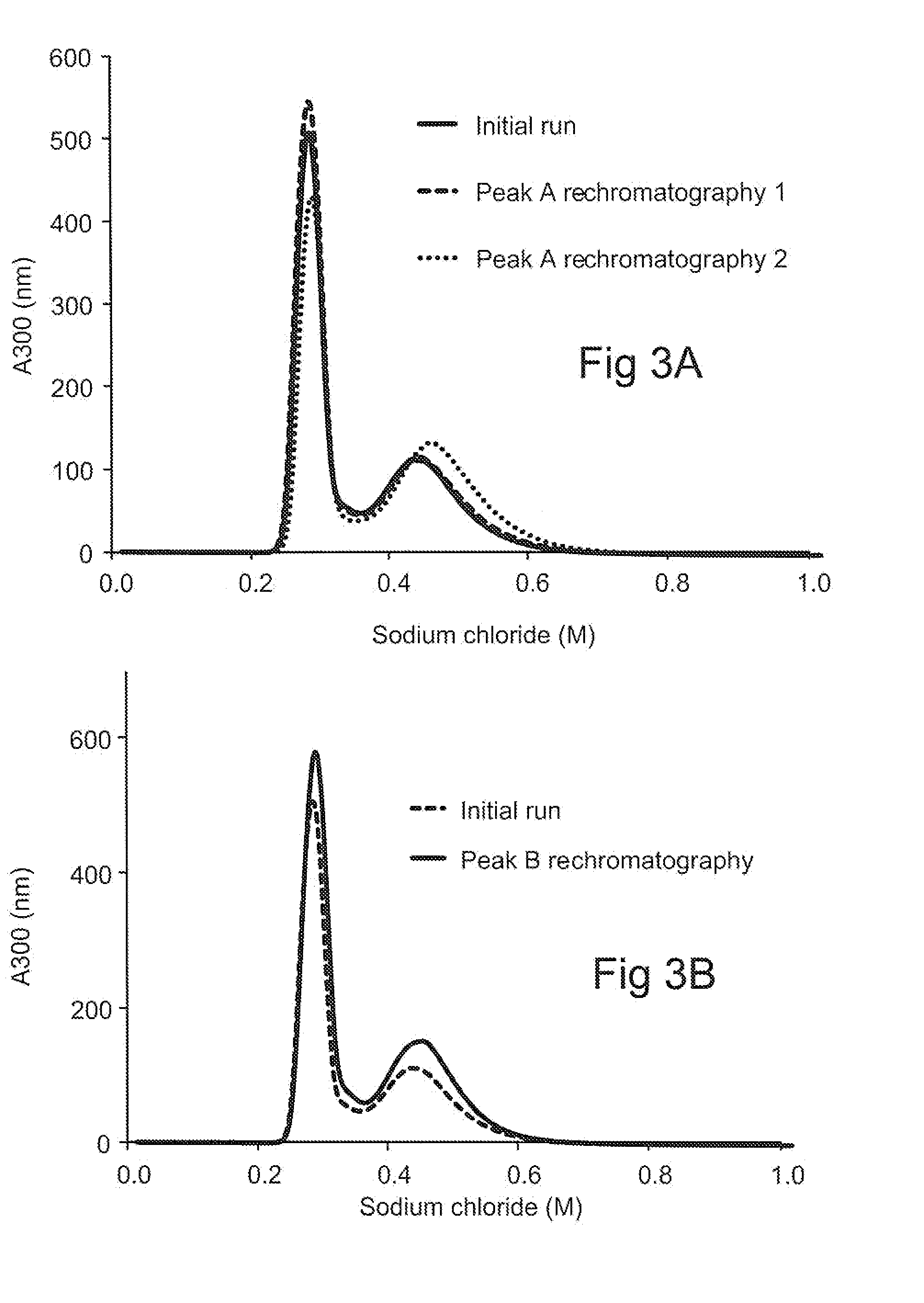Protein purification
a technology of chromatography and protein, applied in the field of iex chromatography, can solve the problems of insufficient streamlined platform processes to achieve targeted product quality attributes, and can arise challenges, so as to reduce the formation of hmw
- Summary
- Abstract
- Description
- Claims
- Application Information
AI Technical Summary
Benefits of technology
Problems solved by technology
Method used
Image
Examples
example 1
CEX Chromatography
[0125]Initial purification of mAb1 was performed using MabSelect protein A resin followed by low pH viral inactivation and depth filtration. The depth filtered viral inactivation pool (FVIP) had 3.9% HMW species and approximately 3000 ppm HCP. A sample (20 g mAb 1 per L resin) was subjected to CEX Fractogel® SO3− chromatography using an NaCl gradient from 0 mM NaCl to 500 mM NaCl buffered with 30 mM acetate, pH 5. Exemplary data are shown in FIG. 1A. One trace is absorbance at 300 nm, showing an atypical profile of two distinct peaks, labeled “A” and “B” on the plot. Also shown in FIG. 1A is a graph of the percent of high molecular weight (“HMW”) species in the eluent (error bars), showing that Peak B had a significantly larger percentage of high molecular weight (HMW) components, determined as described above.
[0126]Table 1, below, shows a summary of % yield, % HMW and HMW mass balance data from two experiments. Percent yield was calculated by dividing the total ma...
example 2
Peak A and B Characterization
[0130]Results of analytical CEX HPLC experiments of material eluted as either Peak A or Peak B are shown in FIGS. 2A and 2B, respectively. The profiles of material from peak A (FIG. 2A) and peak B (FIG. 2B) are equivalent and indicate that the charge distribution composition of the material forming peak A and the material forming peak B is essentially identical. A Mass Spectrometry evaluation of the two peaks indicated that that the material, forming peak A and the material forming peak B has essentially the same mass. Taken together, these data strongly support the idea that the material forming peak A and the material forming peak B are essentially the same.
[0131]Peak A and B material was also evaluated for additional properties, including binding activity, peptide mapping and differential scanning calorimetry (“DSC”). These additional evaluations showed no differences (as between material from Peak A and material from Peak B) in binding activity, pept...
example 3
Peak A and B Re-Chromatography
[0132]The two peaks were, collected and re-run on the same CEX column under the same operating conditions. Re-chromatography of peak A resulted in a similar profile as was seen with the original material, i.e., the formation of two distinct peaks (FIG. 3A). The first peak was re-chromatographed again, and again resulted in the formation of two prominent distinct peaks (FIG. 3A). Re-chromatography of peak B also resulted in a similar profile as was seen with the original material, i.e., the formation of two distinct peaks (FIG. 3B), and that a significant proportion of Peak B elutes as Peak A upon re-chromatography. Further, as can be appreciated from the data shown in FIG. 3C, the HMW distribution of the re-chromatographed Peak B is similar to that seen with the initial material.
[0133]Taken together, the data indicate that continued generation of peak B is not due to structural isoforms in the load, but is induced by the chromatography matrix surface in...
PUM
| Property | Measurement | Unit |
|---|---|---|
| temperature | aaaaa | aaaaa |
| temperature | aaaaa | aaaaa |
| temperature | aaaaa | aaaaa |
Abstract
Description
Claims
Application Information
 Login to View More
Login to View More - R&D
- Intellectual Property
- Life Sciences
- Materials
- Tech Scout
- Unparalleled Data Quality
- Higher Quality Content
- 60% Fewer Hallucinations
Browse by: Latest US Patents, China's latest patents, Technical Efficacy Thesaurus, Application Domain, Technology Topic, Popular Technical Reports.
© 2025 PatSnap. All rights reserved.Legal|Privacy policy|Modern Slavery Act Transparency Statement|Sitemap|About US| Contact US: help@patsnap.com



